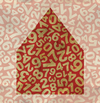Solving algebra problems step by step with wxMaxima
|
The roots of the wxMaxima computer algebra system (CAS) go way back. A program called Macsyma [1], which has not been developed for quite some time, forms the basis of a variant named Maxima [2] that served the U.S. Department of Energy (DoE). Its developer, William Shelter, got permission from his employer to publish the program under the GPL [3]. Andrej Vodopivec is currently coordinating the project.
With the program's introduction into the world of free software, developers soon emerged who took the code under their wing. Aside from Xmaxima, wxMaxima currently is the preferred interface, and it uses a Lisp kernel called Maxima. It works not only on Linux but also on Mac OS X and Windows.
With many distributions, wxMaxima [4] is installed through a simple command and thus avoids configuring the core. However, if you want to work with Xmaxima and the associated Tcl/Tk widgets, you will need some additional packages.
[...]
Buy this article as PDF
Pages: 4
(incl. VAT)






